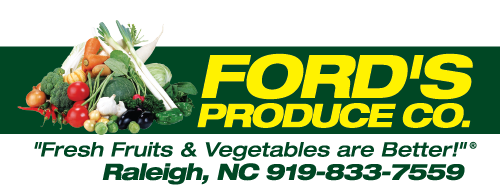Fruit Storage Guide | Vegetable Storage Guide
Proper rotation practices must be followed in order to keep produce fresh.
Simply write the delivery date on the outside of every carton received and store the cartons so the date can be easily read. The oldest product should be used first according to the FIFO method (First-In, First-Out).
 Temperature fluctuates widely from front to back of the cooler due to the location of the cooling unit and frequency of the door being opened. Divide the cooler into three areas and store as noted below:
Temperature fluctuates widely from front to back of the cooler due to the location of the cooling unit and frequency of the door being opened. Divide the cooler into three areas and store as noted below:
1. Apples, Basil, Cabbage, Cantaloupes, Carambola, Citrus, Cucumbers, Eggplant, Garlic, Honeydews, Jicama, Limes, Okra, Onions, Papayas, Pears, Peppers, Pineapples, Plums, Radishes, Rhubarb, Ripe Tomatoes (for short periods only), Zucchini.
2. Alfalfa, Apricots, Bean Sprouts, Berries, Carrots, Corn, Fresh-Cut Salads, Greens, Head Lettuce, Herbs, Kale, Leaf Lettuce, Parsnips, Ripe Nectarines, Ripe Peaches, Spinach
3. Artichokes, Asparagus, Beets, Broccoli, Cauliflower, Cherries, Coconuts, Grapes, Green Onions, Kiwifruit, Mushrooms, Parsley, Peas, Turnips, Watercress
Store at room temperature: Pineapples, bananas, papayas, pears, mangos, avocados but they should really be used upon arrival. Be careful not to over-buy; if you refrigerate a ripe tomato, it loses flavor.
Do not refrigerate these items: potatoes, onions, garlic, ginger roots, rutabagas and yams.
We look forward to serving you!






